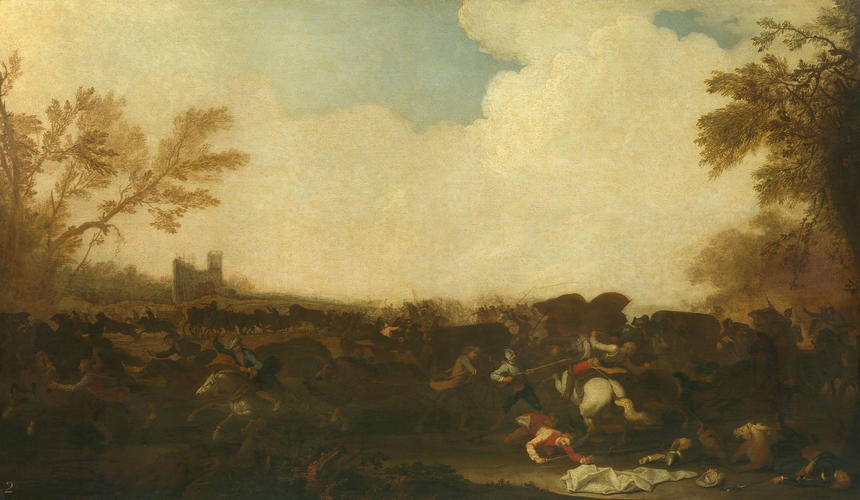Soldiers Attacking a Foraging Party c.1690-1740
Oil on canvas | 115.5 x 195.4 cm (support, canvas/panel/stretcher external) | RCIN 403942
-
Georg Philipp Rugendas painted, sketched and engraved cavalry encounters which became a popular genre for decorating great houses and palaces. Born in Augsburg, the son of a watchmaker, he was first apprenticed to the Augsburg painter, Isaak Fisches I (1638-1706) and later travelled to Rome, Venice and Vienna. Back in his native town he married Anna Barbara Haid, who owned a print-publishing firm. His first biographer, Fussli, recorded that he gave up painting c. 1715 in favour of the more lucrative graphic art to feed his family, and did not take it up for 20 years. He rarely signed his work. His three sons assisted with the publishing house he established in 1735.
This is one of a set of eight military paintings by Rugendas (RCINs 403044, 403936, 403942, 405700, 405714, 405728, 406030, 406092), first recorded in Windsor in 1768 by Joseph Pote and said to have been bought for George III in Switzerland. They appear in Pyne’s Royal Residences of 1819, in the King's Guard Chamber at Windsor Castle as part of a display with military weapons (RCIN 922111). Of the set of canvases, two are slightly wider than the others.
Two galloping baggage convoys are being attacked by soldiers in an extensive landscape; in the foreground, right, a skirmish is in progress; a soldier on a grey horse has just been shot by another, several more lying dead and wounded.Provenance
Acquired by George III and first recorded at Windsor Castle in 1768
-
Creator(s)
-
Medium and techniques
Oil on canvas
Measurements
115.5 x 195.4 cm (support, canvas/panel/stretcher external)
126.5 x 205.5 x 5.0 cm (frame, external)








